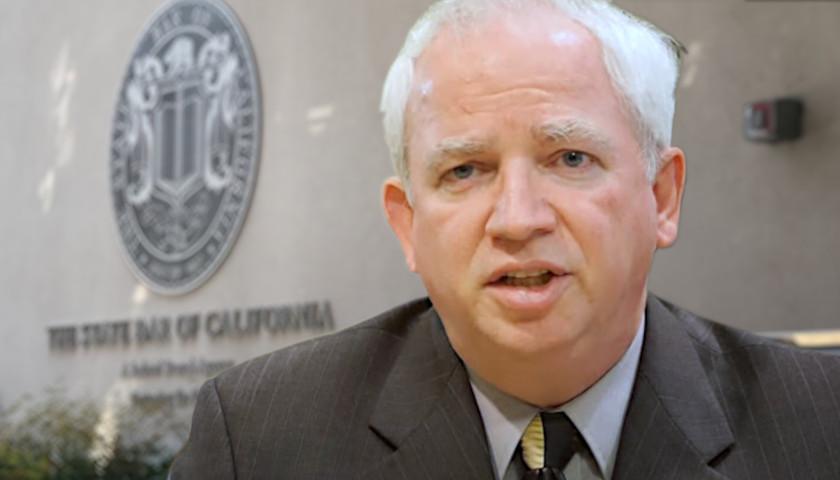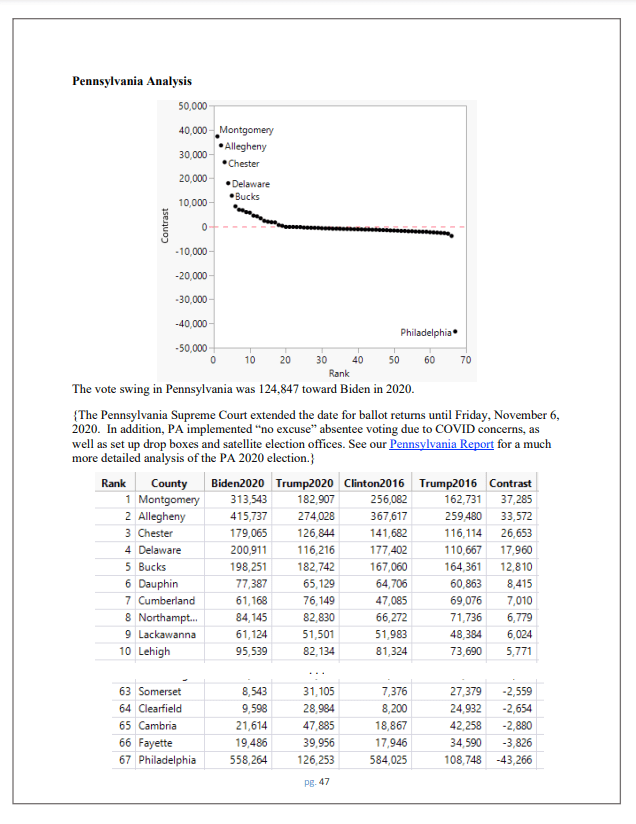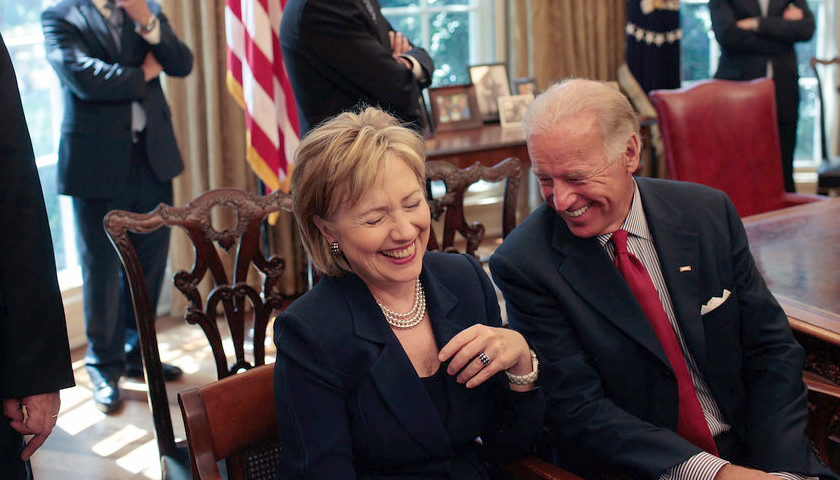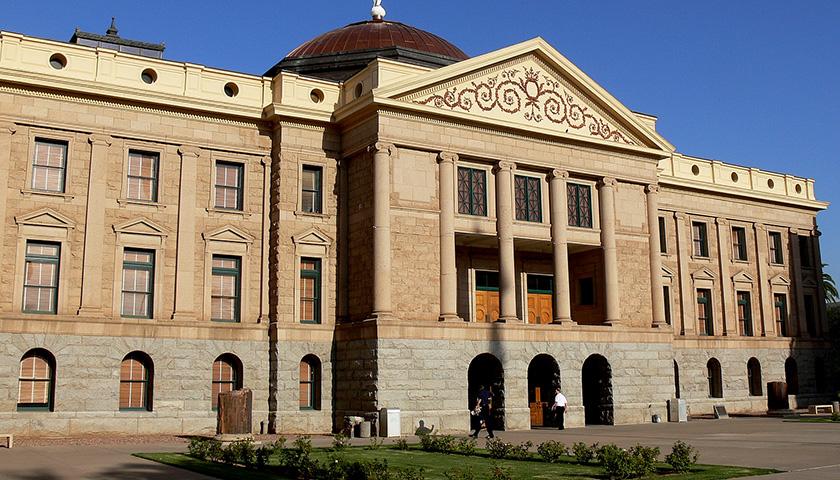The disbarment trial of Trump’s former attorney and constitutional legal scholar John Eastman entered into its seventh week on Tuesday, with two of Eastman’s witnesses returning to the witness stand for cross-examination. Physicist John Droz discussed the reports he oversaw on election anomalies in the 2020 election, and retired Department of Defense analyst Ray Blehar revealed that despite the huge increases in votes for Joe Biden compared to Hillary Clinton in 2016, Biden got fewer votes than she did in Philadelphia.
The proceedings began with a discussion of whether Eastman’s witnesses would be allowed to testify about the vote spikes report, which revealed large net dumps of votes solely for Joe Biden on election night. Both Droz and Blehar worked on the report, but the Democrat donating California Bar Disciplinary Judge Yvette Roland has refused to allow them to testify about it or allow it into evidence, mainly asserting that it’s because she hasn’t designated them as expert witnesses. She said last week that the report would likely be allowed into evidence this week since a forthcoming witness for Eastman, statistician Stan Young, has been designated an expert witness, but she and the California bar’s attorney Duncan Carling started discussing how even he would probably not be enough to allow it into evidence.

One of the reports that was not discussed until Carling brought it up was a contrast analysis report that Droz’s statistical team of PhDs put together showing the stark contrast between the number of votes Hillary Clinton received in the 2016 election versus the huge number of votes Biden got. Carling spent a considerable amount of time asking Droz why he didn’t bother comparing the numbers to previous election years too. However, one member of the team, Young, did look at numbers from 2012 in Pennsylvania and Michigan.
Once Carling started asking the witnesses about the vote spikes report, Roland did not object and they were allowed to discuss it extensively. Droz said he didn’t know if elections were properly conducted, because “we’ve never done a proper audit.” He said elections have become problematic over the last 10 years since “certain groups realized the porousness of our elections and started to take advantage of it.”
Droz runs the election-integrity.info website, which contains reports from him and his team that are currently being discussed during the trial. Droz said the only way to fully verify that elections are not fraudulent is to conduct three types of audits, and none of those audits have ever all been conducted in one election. He said all three are needed because there are three components of election procedure to consider when ensuring election integrity; the voters, the machines, and the process.
Droz said one of those types of audits, a full forensic machine audit, was conducted in Michigan’s Anterim County, where people were allowed unfettered access to the machines. As a result, he concluded that “the Dominion system was purposely designed with inherent errors,” he told The Arizona Sun Times.
Droz said a full election process audit was conducted in the U.S. House race in New York between former Representative Anthony Brindisi (D-NY-22) and Representative Claudia Tenney (R-NY-24). As a result, a judge found that there were at least nine process violations, violating nine state laws.
Much of Carling’s cross-examination of Droz consisted of asking him why he didn’t do more research, or investigate the backgrounds of the other PhDs on the team further. Droz dismissed much of the questions by saying he only has so much time.
When it was Eastman’s attorney’s turn for redirect, he asked Droz about a graph of the U.S. Senate runoff race in January 2021, which was emailed between Eastman and one of the PhDs. It showed a blue spike halfway through overtaking the red line. Roland refused to allow it into evidence, stating “it’s not clear the source of this information.”
When Blehar was on the witness stand, Carling also asked him questions about the contrast analysis report. Carling spent a lengthy amount of time discussing the fact the huge increases for Biden came from highly populated, Democratic areas. Blehar responded by pointing out the results in Philadelphia. There, while Trump increased his votes between 2016 and 2020, Biden got significantly fewer votes than Clinton, around 558,000 to Clinton’s 584,000.

Carling asked Blehar if he was aware of any elections where there was fraud. Blehar said other than the incidents reported in the news where people were prosecuted, he doesn’t know due to the lack of real audits; “we’d need forensic audits and other types.”
Carling spent some time asking Blehar about the vote spikes report, including four graphs from the report showing the vote spike in Georgia. He also discussed two vote spikes in Arizona, one around 108,000 votes and the other 143,000 votes. Blehar remarked after awhile, “It’s funny, I wasn’t allowed to discuss any of this on Friday [when Eastman’s attorney was conducting direct examination].”
The U.S. Supreme Court declined to hear an appeal from Eastman on Monday in a related case, where Eastman had challenged the Jan. 6 select committee making his confidential emails public by leaving a live url inside one of their court filings that was accessed by Politico. That error undermined Eastman’s effort to prevent the committee from accessing the emails in the first place. The emails were then used by a lower court against Eastman, which may have made the issue moot to SCOTUS.
The trial, which is live-streamed, continues off and on through October 19 unless interrupted by the Georgia prosecution of Eastman, and could potentially last longer.
– – –
Rachel Alexander is a reporter at The Arizona Sun Times and The Star News Network. Follow Rachel on Twitter / X. Email tips to [email protected].






Sounds like the James case in NY. The Judge seems to already have made up her mind and will not allow evidence to be entered by the defendant. Where is this happening again, Salem?